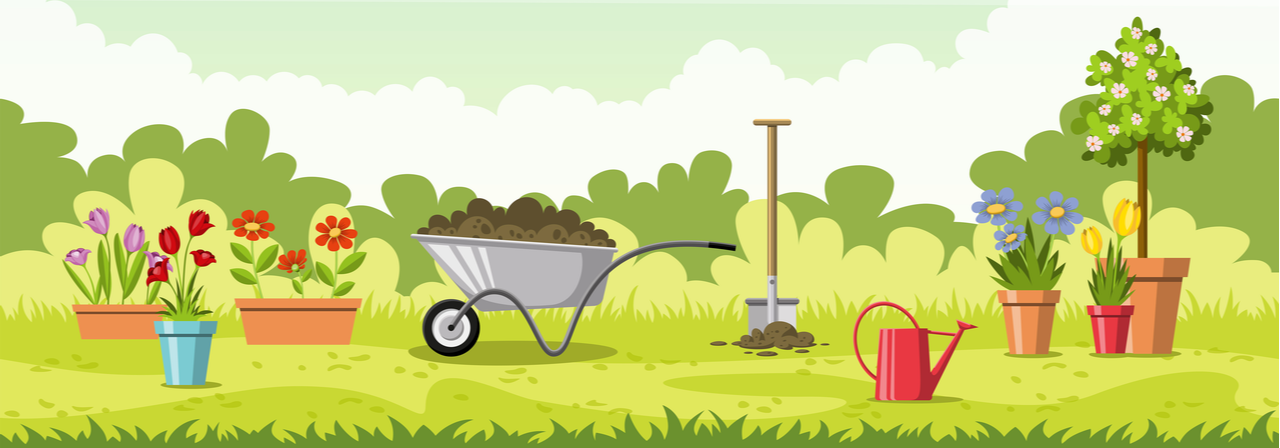With Easter come and gone, many homeowners are looking forward to the warmer weather and time to plant a garden. For some new gardeners, the planning phase can seem like the most daunting, but once you get your hands dirty, the fun really begins!
Gardening is one of the most fun, and potentially health-boosting, hobbies you can have. Whether you’re growing beautiful flowers or focusing on vegetables and herbs to feed you and your family, we’ve put together some tips for beginner gardeners to help you get started.
Size Your Garden Correctly
It’s almost too easy to start tilling up a section of your yard to create a garden, and before you know it, you’ve got a garden that is too large and unmanageable to be enjoyable. For that reason, it’s important to size your garden correctly to begin with. Start by planning what you want to grow, decide how much space is required to grow your plants, and then build your garden plot.
If you’re planning on growing vegetables, then turn towards Mel Bartholomew’s Square foot Gardening book for a guide on how to lay out your small garden. By utilizing your space wisely, you can both optimize the number of plants and crops you plant as well as maximize the space you have. It’s amazing to see just how much you can fit into small spaces!
Seeds Versus Plants
Next, you’ll need to decide whether or not you’ll start your garden from seeds. It may seem logical to start sowing seeds right away, but if you’re a beginner gardener, you may be better off visiting a local nursery or hardware store to purchase plants instead. This will largely depend on your skill as a gardener, but don’t let the price of seeds versus transplants make the decision for you.
On one hand, starting plants from seed begins with planning. You’ll want to sow fast-growing seeds first. Many fast-growing vegetable plants tend to be easy to start from seed, grow quickly, and give you a harvest sooner than other summerlong plants. On the other hand, you could plan out your garden in such a way that you transplant already started plants from a local nursery.
Bear in mind, if you’re getting a late start to your gardening endeavor, then transplants may be the only way to go. Plan your garden early, but also keep your eyes on fall crops as well.
Location, Location, Location
Where to locate your garden is an often overlooked part of the beginner gardener’s planning. Where you grow your garden will depend on several factors including what you’re growing, how much sunlight they require, plus how close you are to your gardening shed, water source, and harvesting materials.
You’ll likely want to plant your garden in an area where it will get at least 6-8 full hours of sunlight each day. On top of that, make sure you can easily access your water source as transporting heavy containers of water will lessen your vigor for your new hobby. Finally, make sure that your location is best for the plants you intend to grow. If you’re looking at growing shade-tolerant flowers, then a full-sunlight location likely isn’t ideal.
Start Your Spring Gardening off Strong
Whether you’re looking at planting a small garden or going much bigger with your outdoor projects, get in touch with Tidewater Mortgage Services, Inc. Tidewater helps gardeners and homeowners alike meet their financial goals with tools that work for them. If you’re looking at making major home renovations or need some cash for an outdoor project, Tidewater’s loan experts can help you refi your existing home! Also, if you are looking for a new home with that perfect garden, give Tidewater a call today to help with all your home mortgage needs!


